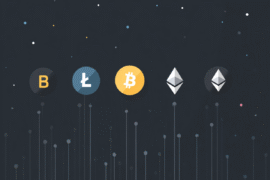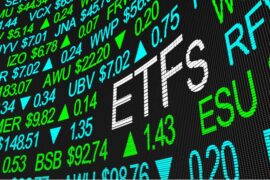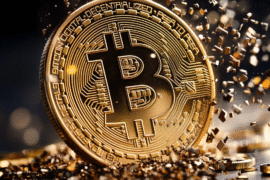This article may contain references to products or services from one or more of our advertisers or partners. We may receive compensation when you click on links to those products or services. Nonetheless, our opinions are our own.
The information presented in this article is accurate to the best of our knowledge at the time of publication. However, information is subject to change, and no guarantees are made about the continued accuracy or completeness of this content after its publication date.
Holding a mix of stablecoins, payment tokens, and governance tokens has quietly become a smart way to stay flexible. It’s less about riding waves and more about having access—to value you can actually use, tools that move across platforms, and a bit of say in how some of these systems grow.
Once that mix is in place, the next challenge is keeping it functional across everyday use.
Keeping It All in Reach
Managing different tokens doesn’t need to be complicated. What makes it work is having one space that handles everything cleanly—no jumping between platforms, no digging around to find your assets.
That’s where the reliable wallet fits in, a non-custodial and decentralized option, letting users move between assets effortlessly and stay in total control without the clutter. In addition to its non-custodial nature, the wallet also supports multiple assets and blockchain networks. (source: https://apps.apple.com/us/app/best-wallet-bitcoin-crypto/id6451312105)
From Passive Holding to Everyday Use
Diversification only shows its value when it fits into how people actually live and spend. It’s one thing to hold a range of assets, but the real shift happens when you’re able to use them—without jumping through hoops or converting everything back to fiat.
Whether it’s sending stablecoins to cover a shared bill, using a payment token at checkout, or holding governance assets that let you vote on updates to a platform you believe in, everyday use demands simplicity.
That’s why more users are looking beyond basic storage and toward tools that let them act in real time, with low friction and high visibility across everything they own.
Why Token Utility Actually Matters
Holding different assets only makes sense if each one serves a purpose. For casual users, that often means balancing between tokens that move money quickly, those that hold value steadily, and ones that give access to more than just transactions.
Payment tokens are becoming more widely accepted in digital and physical retail, while stablecoins give users a way to avoid price swings without stepping outside the crypto space. Governance tokens, though more subtle, give people the ability to influence changes on platforms they rely on.
These aren’t just theoretical use cases anymore—real decisions are being made, and value is being moved daily, by people who once thought crypto wasn’t for them. What’s changing is that the tools are finally matching the needs.
How Systems Turn Value into Action
When assets start performing specific roles inside a broader system, holding them becomes secondary to how they behave across different layers of activity. On Solana, for example, transaction fees are measured in fractions of a cent, making it easy to handle micro-interactions across gaming, marketplaces, and finance without slowing the user down.
On platforms such as Aave or Compound, tokens act as collateral, yield generators, and voting power—all without leaving the user’s control. These roles aren’t theoretical—they’re programmed into the structure of the ecosystem.
The shift is visible in how newer protocols are being built. Instead of treating each token as an endpoint, developers are assigning them responsibilities across services. A governance token might double as a liquidity incentive, while a stable asset might be used to mint synthetic products in a few clicks.
On Solana, for example, transaction fees are measured in fractions of a cent, making it easy to handle micro-interactions across gaming, marketplaces, and finance without slowing the user down.
Voted "Best Overall Budgeting App" by Forbes and WSJ
Monarch Money helps you budget, track spending, set goals, and plan your financial future—all in one app.
Get 50% OFF your first year with code MONARCHVIP
Side-Stepping the Panic Sell
One of the clearest advantages of diversification for everyday users is the ability to stay engaged even when markets become unpredictable. Instead of selling everything and retreating to fiat, users now shift between stablecoins, low-volatility assets, and platform-native tokens depending on what the situation demands.
This kind of movement doesn’t require deep market knowledge—it’s increasingly built into tools that automate the process or guide users through basic allocation settings.
On platforms such as Yearn or Idle Finance, everyday users can deposit tokens and let smart contracts rebalance risk in real time, often moving between strategies based on yield, security, or exposure. While these tools used to cater mostly to active traders, the interfaces have become simple enough that casual users can now engage without needing to understand the mechanics behind them.
In practice, this means someone can keep making profits or preserving value without needing to monitor charts or jump in and out of the market manually.
Token Roles Are Starting to Blur
As platforms evolve, the lines between different types of tokens are getting harder to define. A governance token might carry staking rewards. A stablecoin could unlock protocol features if held within a certain smart contract. Even gaming tokens are being used for liquidity farming or cross-platform access.
Everyday users benefit from this convergence because it reduces the need to constantly swap or shift assets. One token can now serve multiple roles, reducing clutter while expanding utility.
The benefit? Less micromanagement, more flexibility, and fewer barriers to doing more with less.
Interactions Are Becoming the Interface
For many users, crypto activity is no longer limited to opening a wallet or visiting a specific dApp. Interactions—sending, staking, borrowing, or accessing content—are increasingly integrated into the flow of other platforms. Messaging apps now support in-chat payments.
Browser extensions allow token swaps without navigating away. In gaming environments, value transfers happen behind the scenes. This shift means users don’t need to think in terms of “using crypto.” It just works, invisibly, as part of what they’re already doing.
The less conscious friction involved, the more people lean into diversified holdings that naturally support those flows.
Staying Active Without Constant Attention
One of the underrated benefits of having a well-structured crypto setup is that it doesn’t require daily input. With automation built into many platforms—whether it’s yield optimization, fee smoothing, or balance rebalancing—users don’t need to react to every market movement.
Diversification across assets and chains means fewer single points of failure and a smoother ride overall. For everyday users who have no interest in babysitting their portfolio, that kind of passive functionality is exactly what makes the system viable long-term.

Reviewed and edited by Albert Fang.
See a typo or want to suggest an edit/revision to the content? Use the contact us form to provide feedback.
At FangWallet, we value editorial integrity and open collaboration in curating quality content for readers to enjoy. Much appreciated for the assist.
Did you like our article and find it insightful? We encourage sharing the article link with family and friends to benefit as well - better yet, sharing on social media. Thank you for the support! 🍉
Article Title: Crypto Diversification Isn’t Just for Traders: Everyday Users Can Benefit Too
https://fangwallet.com/2025/04/23/crypto-diversification-isnt-just-for-traders-everyday-users-can-benefit-too/The FangWallet Promise
FangWallet is an editorially independent resource - founded on breaking down challenging financial concepts for anyone to understand since 2014. While we adhere to editorial integrity, note that this post may contain references to products from our partners.
The FangWallet promise is always to have your best interest in mind and be transparent and honest about the financial picture.
Become an Insider

Subscribe to get a free daily budget planner printable to help get your money on track!
Make passive money the right way. No spam.
Editorial Disclaimer: The editorial content on this page is not provided by any of the companies mentioned. The opinions expressed here are the author's alone.
The content of this website is for informational purposes only and does not represent investment advice, or an offer or solicitation to buy or sell any security, investment, or product. Investors are encouraged to do their own due diligence, and, if necessary, consult professional advising before making any investment decisions. Investing involves a high degree of risk, and financial losses may occur including the potential loss of principal.
Source Citation References:
+ Inspo
There are no additional citations or references to note for this article at this time.












































